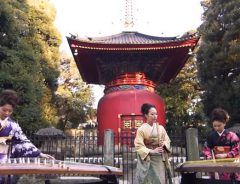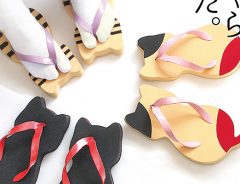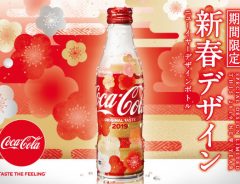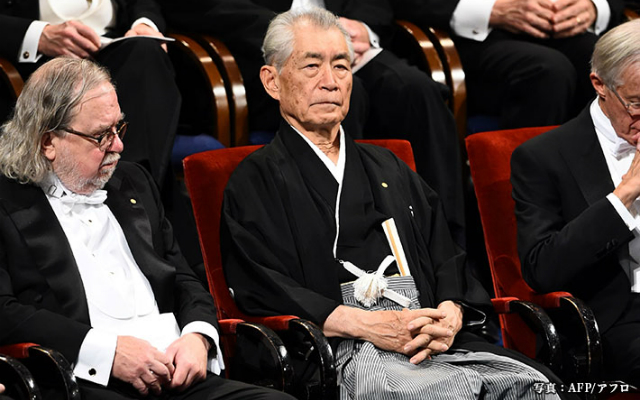- Source:
- NobelPrize
- Tags:
- Award / Hakama / Kimono / Traditional
Related Article
-

Traditional Japanese Instrumental Cover Of Welcome To The Jungle Is Pretty Awesome
-

Traditional Japanese Worker Pants Get A Denim Samurai Makeover
-

Japanese Instrumental And Beat Box Covers Of Attack On Titan, Mission Impossible, Dragon Ball–And More!
-

Give Your Feet Nine Adorable Lives With Cat-Shaped Japanese Geta Sandals
-

Japanese Summer Fashion Is Purring With These Cute Cat Yukata
-

Coca-Cola Japan Celebrates The New Year With Plum Blossom And Kimono Design Bottle



One of the co-winners of the Nobel Prize in physiology or medicine this year is Japanese scientist, Tasuku Honjo. His discovery paved the way for a new cancer treatment which he hopes can become available for patients around the world.
He is far from the first Japanese recipient of the award, 26 others have come before him. But his appearance at the ceremony in Stockholm on 10th December has become a great source of national pride for Japan.
The reason is that he reinterpreted the dress code of the high-profile event to show pride in the country where he conducted his revolutionary research. The strictly formal affair requires all male participants to wear white tie and tails, but the scientist rolled up in traditional Japanese clothing, a hakama and haori jacket.
Coattails on a suit mean that the front part of the jacket is short, but the back trails down to the knees. The haori worn over the hakama gives the same impression, as the material is long at the back and sides. He also made sure to include the white ‘tie’ as a decoration at the waist.
Although obviously his fashion choices are less important than his achievements as a scientist, no one would deny that Mr. Honjo looked awesome. Japanese comments online heaped praise on him for being brave enough to stand out in a room full of Western-style suits and represent his home country so well.
He isn’t the first Japanese Nobel Prize winner to wear Japanese style formalwear to the ceremony. In 1968, novelist Yasunari Kawabata also accepted his prize for literature in traditional clothing.
Tasuku Honjo’s dignified appearance showed there isn’t just one type of suit that is befitting of a Nobel Prize winner and perhaps in the future we will see other examples of cultural flair at the ceremonies.